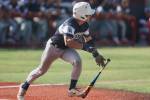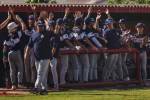Plants usually require extra water after high winds
For those of you who are subscribers to my e-newsletters, please remember that in three more weeks they will no longer be sent to you. To get this information, along with pictures, you must become a follower on my blog. My blog is free and you can access it anytime you are on the Internet. You can find it easily using a search engine like Google or Yahoo, typing in the words "Xtremehorticulture of the Desert" and bookmarking it.
On July 1 my email address will change from my university address to Extremehort@aol.com. Any future questions should be sent to this address.
The past few days have been unusually windy. In fact, this entire spring has been windier than normal. The saving grace is that it is unusually cool for this time of year. Normally I would be irrigating immediately following strong winds such as we had. If the plants were on drip irrigation, I might even be irrigating during the heavy winds.
There are four factors that are the primary driving forces behind plant's use of water. The two biggest are wind and bright, continuous light or light intensity. The other two, temperature and humidity, also are important and increasing temperature nearly always accompanies increasing light intensity. Bright days nearly always indicate warmer days regardless of whether it is winter or summer.
Why is this important to know? Daily changes in the weather are what I use to fine tune my irrigations from week to week. For example, if my normal days to irrigate are Tuesdays and Saturdays and my plants just went through some horrendous winds on Saturday and Sunday, I might irrigate the day after the heavy winds. So instead of waiting until Tuesday I might elect to irrigate one day earlier (or even during windy weather if everything is being drip irrigated).
Late June is normally when temperatures start approaching or exceeding 110 F. As we begin to break 110 F on a regular basis, I will consider adjusting irrigations to three times a week instead of two .
Peach twig borers are flying now and some are getting into early maturing peaches, nectarines and apricots. These small, brown flying moths cause some slight damage to the trees' new growth and wormy fruit. They usually enter the stem end of the fruit, where you can see some frass or light brown grounds left behind by the larva or worm.
These can be easily controlled with sprays of spinosad or Bt, both of which are organic. Follow the label directions and apply regularly. Add a surfactant, such as a spreader/sticker, or small amount of unscented liquid detergent. Spray the entire tree, particularly the fruit .
The asparagus harvest season is almost over and you should stop cutting anymore spears allowing them to grow and feather out as soon as it gets hot. It is important to feed your asparagus as it ferns out to help it rebuild its crowns for next season's crop. You should add a high-phosphorus fertilizer along with compost or light monthly applications of a high-grade fertilizer.
If you planted fruit trees this spring, apply 3-4 inches of course wood mulch, not bark mulch, around them to a distance of about 3-4 feet from the trunk. You must keep the mulch away from the trunk by at least 6 inches so the trunk does not rot at the base. After the tree is 3-4 years old and the trunk is mature with bark, you cannot allow the wood mulch to lie against it.
After these very high winds you can see the wisdom in securely staking newly planted trees in our climate. Stakes should be removed, if possible, after the first full growing season.
Your young fruit trees also need to be protected from our high-intensity, desert sunlight for the first few years of growth. I would not recommend a protective wrapping around the trunk as this can actually create higher temperatures than if it was uncovered. You can use flat boards on the west or south sides of the trunk, but it may be easier to paint the trunk and lower limbs with diluted white latex paint.
Dilute the paint to at least a 50/50 mixture with water. You can use more water than this as long as painting the tree results in a much lighter surface that will reflect sunlight and help keep the surface of the plant cooler than unprotected surfaces.
Paint all surfaces of the young tree that would be exposed to direct sunlight. Most importantly, paint the south, west and northwest sides of the trunk, as well as the upper surfaces of major limbs or scaffolds. Reducing the sunburning of juvenile woody plants will help minimize attacks by boring insects.
Bob Morris is an associate professor with the University of Nevada Cooperative Extension. Direct gardening questions to the master gardener hot line at 257-5555 or contact Morris by email at morrisr@unce.unr.edu.























